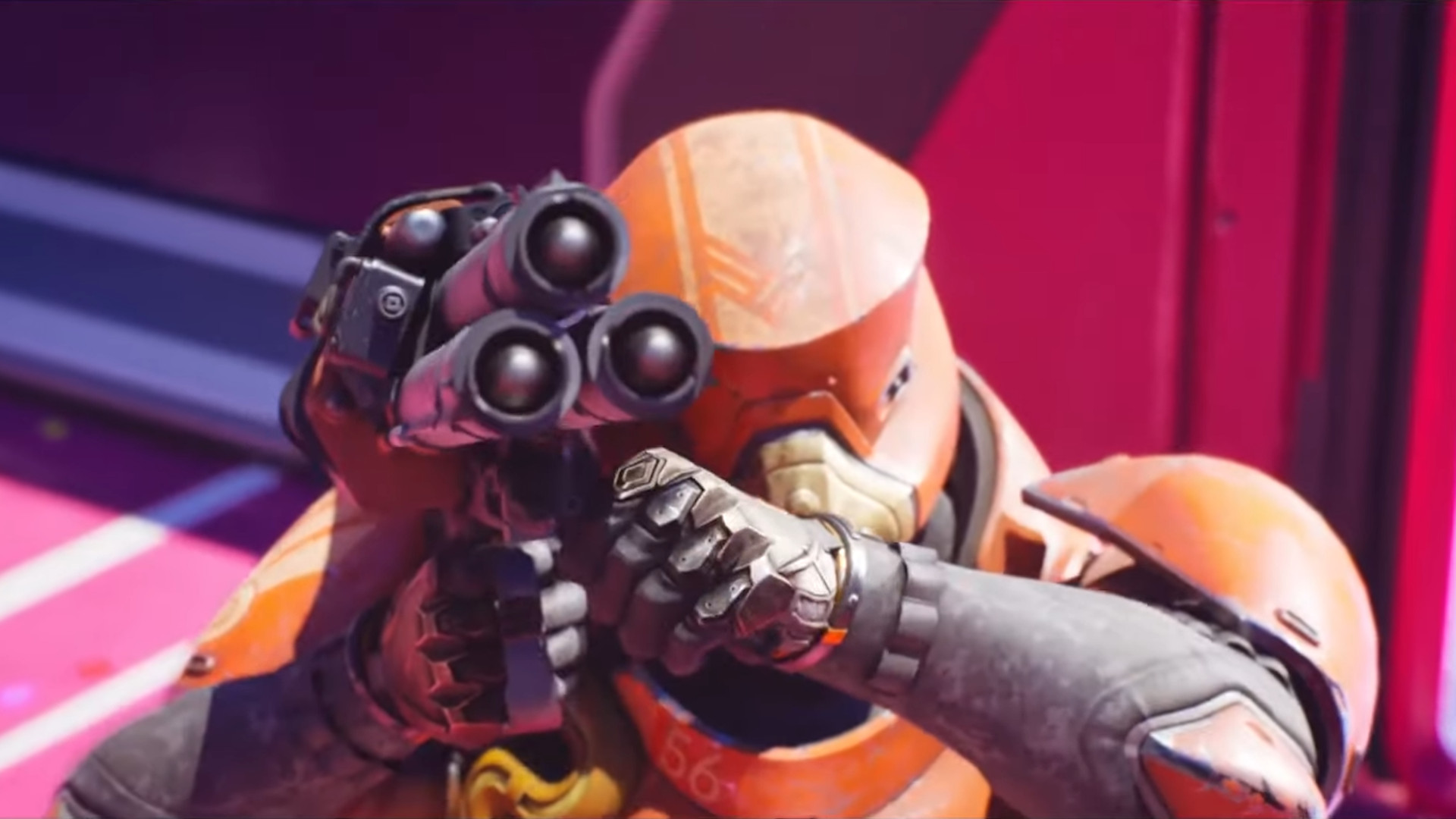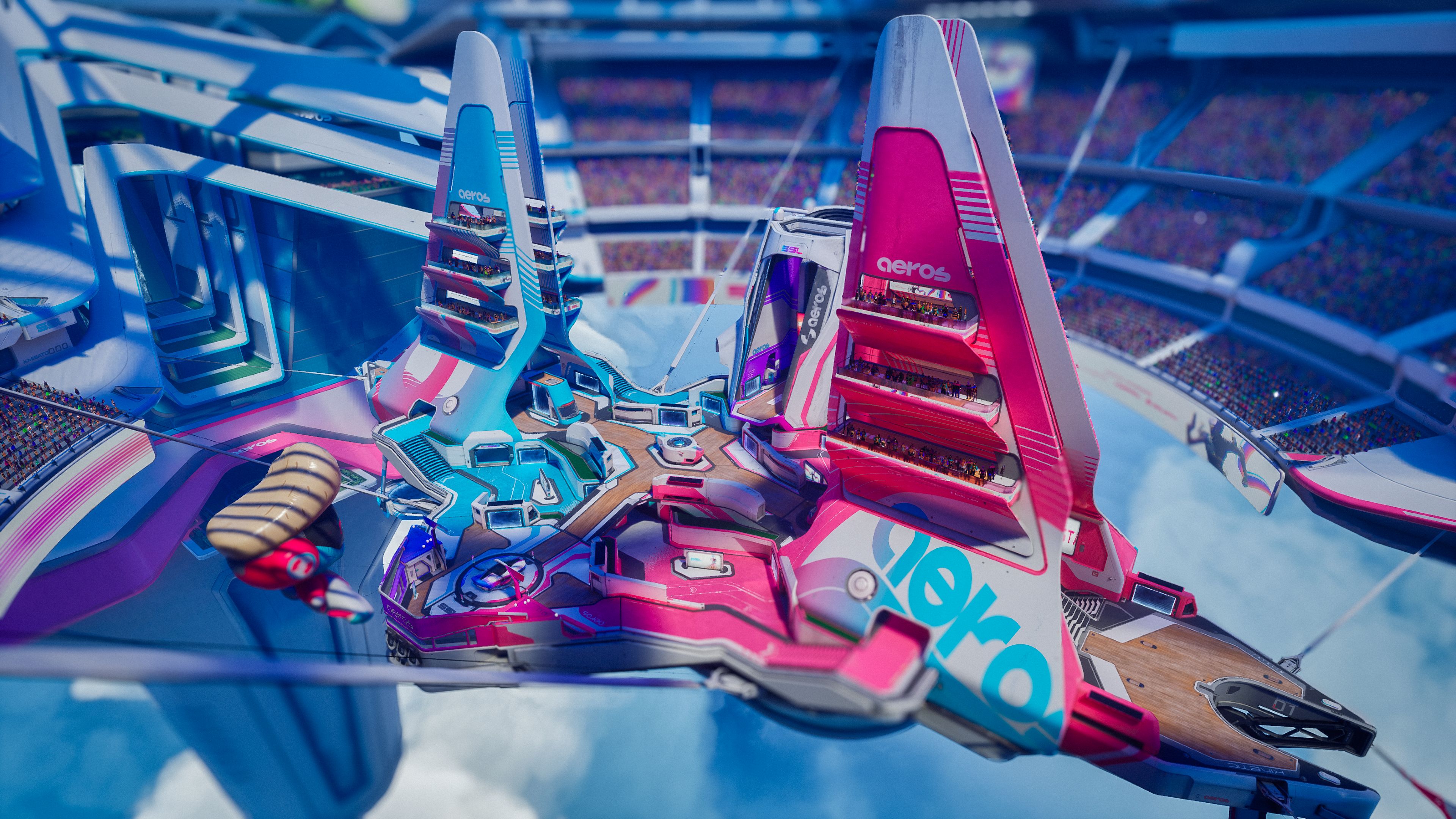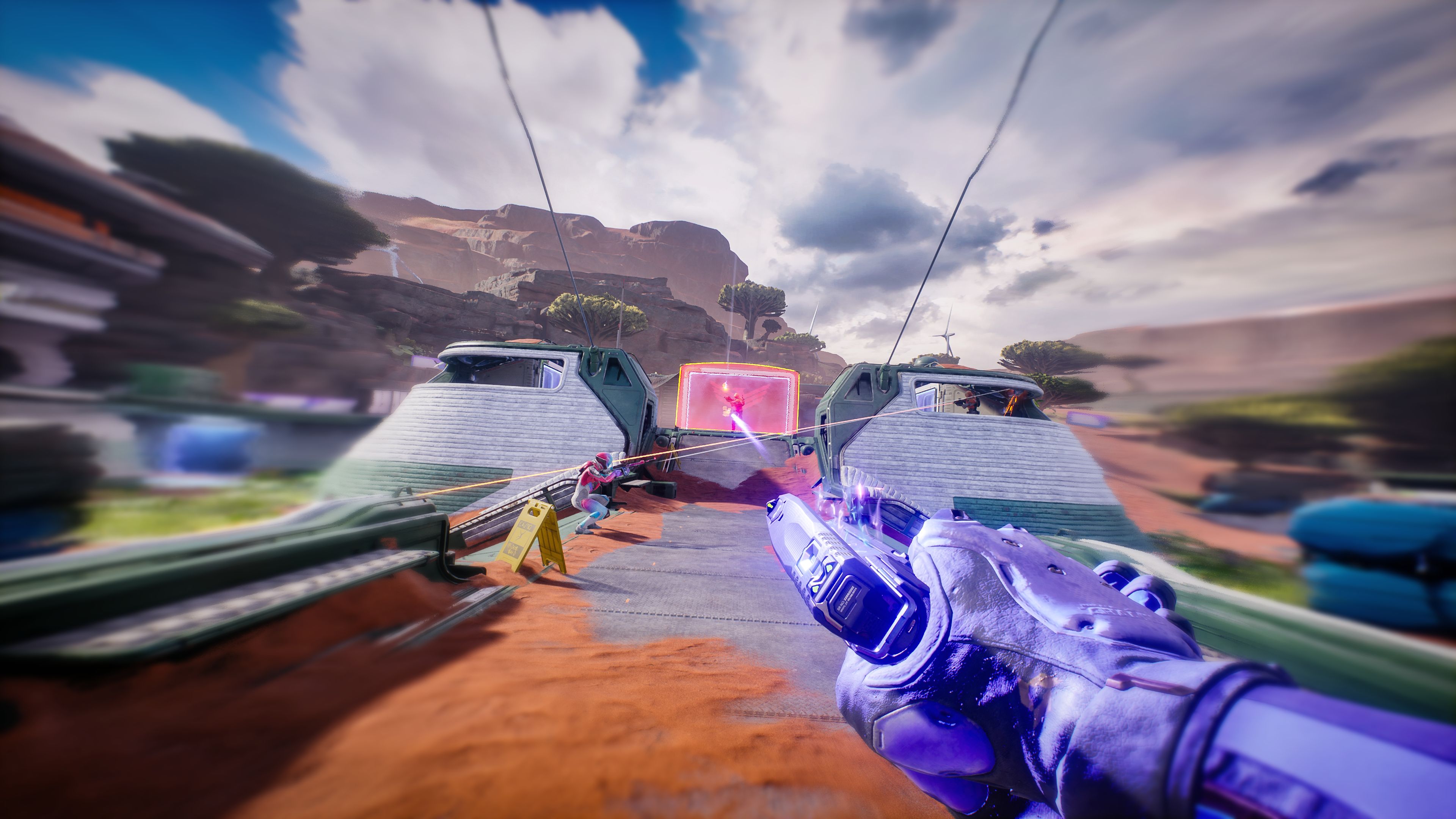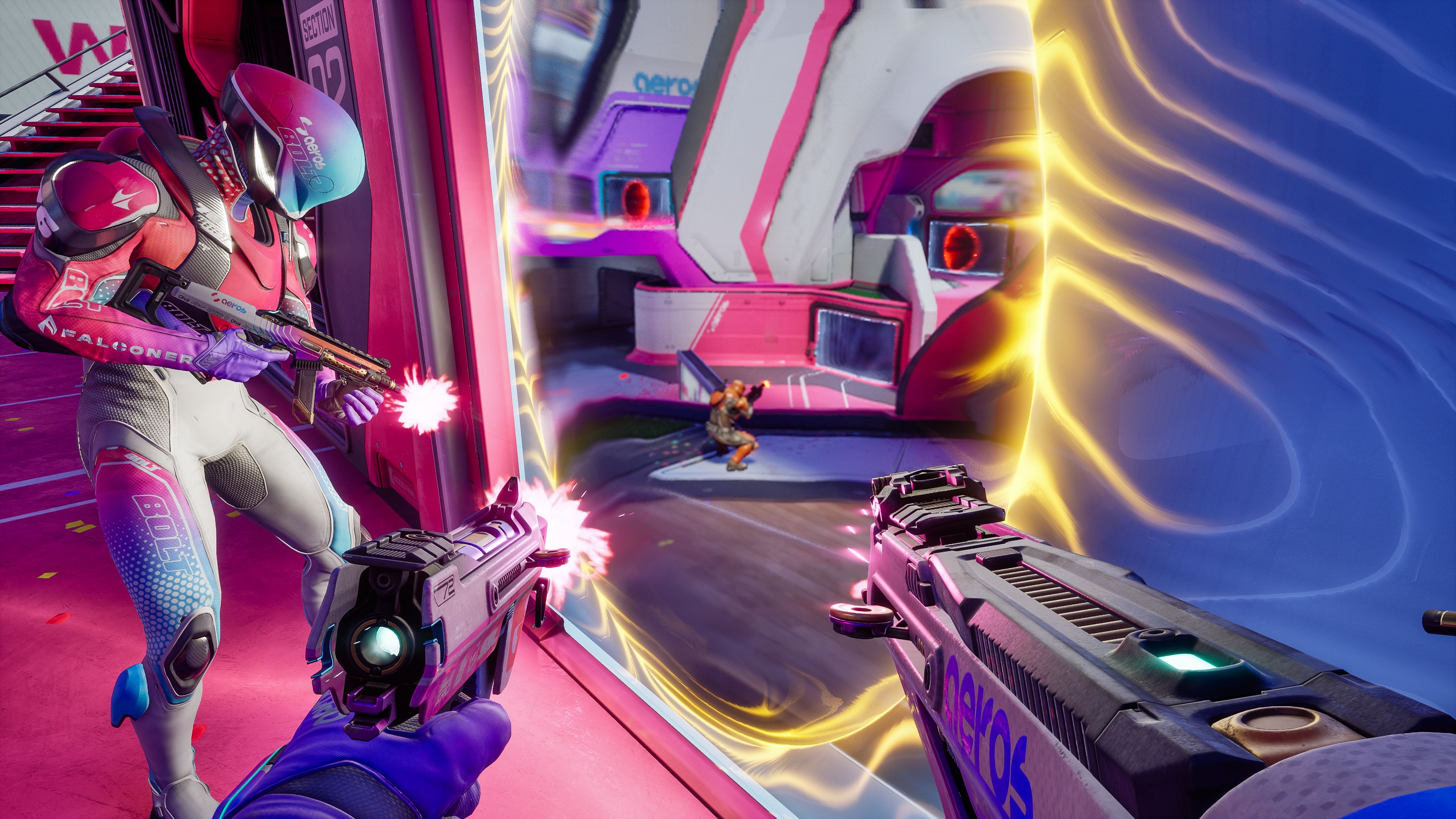
In a time where promising new multiplayer shooters regularly try and fail to escape the shadow of Call of Duty, Fortnite, and Apex Legends, the story of Splitgate and its creators at 1047 Games defies all logic. There were several moments when the "Halo with portals" arena shooter almost sank after failing to find a steady audience with its Steam launch in 2019.
It was a minor miracle when Splitgate reemerged with console ports in 2021 and became the hottest free-to-play game of that summer, exploding to a peak of 200,000 concurrent players and briefly making a traditional arena shooter one of the most-played games in the world.
But what's most surprising to me is what happened after the team of around 20 at 1047 Games, who'd spent months putting out fires caused by Splitgate's unexpected popularity, couldn't keep up with the content demands of its players. The game's five minutes of fame had expired, player numbers were way down, but 1047 didn't plug away at updates in hopes of luring people back or call it quits. Instead, it got the opportunity to do what so few studios in the live service biz ever get to do: Put the old Splitgate on a shelf, and start making a sequel.
Fresh start
"We felt like we had a really good feel of what's missing from [Splitgate 1]. And I think we only had two things that we were actually happy with," Ian Proulx, 1047 Games CEO and creative director, told me in the downstairs office of his Lake Tahoe waterfront home in Nevada. "We thought we had great gunplay and we really like the portal mechanic. Everything else about the game, we just did sort of good enough."
This time six years ago, Proulx and his co-founder Nicholas Bagamian were grinding away at Splitgate from Proulx's parents' house with a lean, remote crew of 15. In 2024, 1047 is still remote, but has steadily grown to over 160. That number took me by surprise—in the year and a half since 1047 went behind the curtain to start on Splitgate 2, the small studio with a student game that punched above its weight has quietly become a landing pad for veteran FPS talent from Infinity Ward, Sledgehammer, Ubisoft, 343 Industries, and more.
The realization brought 1047's decision to leave its first game behind into focus: Splitgate was successful, but it was also cobbled together with code Proulx wrote when he was still a student, maps he designed himself that he now considers "really bad," and an "all over the place" art style that represented the best they could do at the time. Splitgate 2 would be a fresh start on an upgraded Unreal Engine 5, designed from the ground up with "triple-A everything, triple-A graphics, art, style, triple-A sound, triple-A animation, VFX, everything," as Proulx described to me with genuine excitement.

Class acts
The first few months of development were spent brainstorming exactly what kind of shooter Splitgate 2 would be. Proulx wanted the sequel to require more teamwork, have "world class" seasonal updates, more variety, and a lower the barrier to entry while "maintaining a high skill ceiling."
"What if Splitgate 2 were a hero shooter? What would it look like if it were a CoD clone? Would it look like if it were class-based? What would it look like if we just stuck to a Halo-style arena shooter?"
The creative director landed on an intriguing combination of them all: Splitgate 2 has three classes with unique pools of weapons and gear that can be customized, plus Halo-style power weapons that spawn on maps. Each of these factions—Aeros, Sabrask, and Meridian—were designed to accommodate three distinct playstyles. Aeros is a movement-focused faction with a speed boost ability that's all about slick portaling and constant aggression.
"Aeros is really targeting your Splitgate 1 players, the type of people who love building in Fortnite," Proulx said. "It's the mechanically gifted individuals who want to put the team on their back, play fast, play aggressive, and portal like a madman."
Sabrask is a defensive faction with a barrier wall ability, best for holding down capture points or covering your own back against sneaky portals.
"It's targeting your Call of Duty or Halo type player. I want to run and gun, I want to shoot stuff. I'm not the fastest player, but I still have a portal gun. I'm still at a huge advantage if I can use it."
What if Splitgate 2 were a hero shooter? What would it look like if it were a CoD clone? Would it look like if it were class-based?
Ian Proulx, Splitgate 2 creative director
And then there's Meridian, the closest thing to a support role in Splitgate 2. They can activate temporary wall hacks for the whole team and optionally bring a deployable healing station, but their most unique equipment is the "Time Dome," a deployable that creates an AoE field that slows down movement and rate-of-fire for enemies while speeding everything up for allies.
I sampled all three classes in the few matches I played and was surprised by how similar they all played. The abilities and small sample of equipments I tried out are different enough that players will quickly find favorites, but situational healing pads and temporary speed boosts never mattered as much as how well I was shooting and portaling. I got the impression that what ultimately decides matches is good ol' fashioned gunplay, and Proulx told me that's exactly what they're going for.
He places Splitgate 2 on a spectrum between Valorant, a game that's all about positioning and aim, and Overwatch 2, a game that emphasizes powerful abilities.
"We are much more like a Valorant than an Overwatch," Proulx said. "We wanted the success of the game to, ballpark, be 80% dictated by your ability to shoot and portal and have good positioning. And 20% is more about abilities on top of that."

Growing lanes
Splitgate 2's other major divergence is map design. Gone are the bowl-shaped arenas of Splitgate 1. In their place are "three-lane style" maps closer in feel to Call of Duty than Halo. Proulx said this shift in map philosophy was informed by a common negative experience with Splitgate 1's highly vertical, asymmetrical battlefields.
"With Splitgate, we saw a lot of this feeling of 'I have no idea where I'm getting shot from,'" Proulx said. "There were some crazy portal angles where you're standing in the middle of Olympus, you've got four portals above you, and the entire map is a giant circle. I don't think that lends itself well to portal play."
It's true that I never really felt all that comfortable on Splitgate 1 maps. They were easy to get lost in from the jump, and even more so once portals entered the mix. The sheer number of portal surfaces and possible exploitable angles encouraged hunkering down on a small corner of map.
We wanted the success of the game to, ballpark, be 80% dictated by your ability to shoot and portal and have good positioning. And 20% is more about abilities on top of that.
Ian Proulx, Splitgate 2 creative director
After playing three matches of a pre-alpha build of Splitgate 2, I see what Proulx means by these flatter maps providing more "structure." The two maps I played were very readable and intuitive. Portal surfaces, while more scarce than in the old game, feel more deliberately placed. I noticed portal walls on every extreme corner of a map, making for easy fast travel. In one objective mode, portal walls lined key choke points where players can either rush for an overtake or sneakily create kill windows. I never got lost in my short time with Splitgate 2 even after running through a handful of portals—a notch in the "pro" column for the sequel's smaller, simpler maps.
Though, I think 1047 might also sacrifice some personality in pursuit of accessibility. The two maps I played, plus another map I saw but didn't play, were more beautiful, artistically ambitious, and more expensive-looking than anything in Splitgate 1, but a week later I'm having trouble remembering anything about them, layout-wise. As is the case with every modern Call of Duty, it's hard for any one map to stand out when they all start from the same three-lane blueprint.
This is one aspect of the sequel I walked away with real concerns about. Maybe it's the reformed competitive FPS player in me—one who'd, these days, rather take a chance on a lopsided shooter with lots of variety than one that's perfectly balanced—that wishes the Splitgate 2 maps I saw were weirder. I'm sure I'll latch onto little things about 1047's maps eventually, like its restrained use of verticality and multi-floor buildings, but I'm starting to think maps won't be the star of Splitgate 2.

Hot Zone
What might be a star is Splitgate 2's modes, and particularly Hot Zone, its take on King of the Hill. Proulx is proud of Hot Zone, and particularly the way it aims to "make kills matter" the way they do in a tactical shooter like Counter-Strike 2 or a battle royale, but still allow for respawning.
"We're not building a tactical shooter here, we want you to respawn, because that's our DNA. And so we settled on this very unique and rewarding style of respawning," he said. "Hot Zone is round-based and respawn timers increase throughout the length of a round."
Hot Zone rounds are short—the first team to capture two hills wins. Rounds begin with quick five-second respawns and over time climb as high as 20 seconds (1047 is still tweaking what the max should be). That means dying later in a round can severely handicap your team, but there's still hope: scoring kills shortens respawn times for your team by five seconds.
With this next game, we want the modes available 24/7 to be absolute A-plus modes, and they have to be meaningful in terms of variety.
Ian Proulx, Splitgate 2 creative director
"And so you end up with these really epic comebacks where I can be the last man on my team alive, I have three dead teammates, but I get one kill, and I just turned the stakes on you," Proulx said. "People love it."
I played a few rounds of Hot Zone and yea, it is pretty neat. The quick respawn times meant that the first minute of the round felt indistinguishable from standard KOTH, but as the timer increased, the round gradually shifted to a Rainbow Six Siege-like face off against uneven odds. To add another wrinkle, progress toward capturing hills is shared between teams. That means it doesn't matter who holds a hill the longest, only which team holds it at the end of the capture. It's a genuinely unique spin on a classic FPS mode we rarely get anymore, though to be honest, what would've hit the spot as I was getting used to the controls would've been classic Team Deathmatch.
Meaningful variety
Thankfully, Hot Zone and Team Deathmatch are the two that'll be available in an upcoming playtest, and the first of many that we'll see in the full game. 1047 isn't talking specifics yet, but Proulx has big plans for game modes in Splitgate 2. Though, we shouldn't expect every mode to always be available.
Proulx told me that designing Splitgate 2's seasonal content plan has been an "obsession" of his throughout development. He's taken "a lot of long walks on the beach" thinking about how to keep a live service game feeling fresh beyond just cosmetics. A large part of 1047's plan is to regularly introduce new modes and featured playlists that rotate in and out, not unlike Call of Duty, alongside a set of "core" modes that are always available.
"We've totally refactored our game mode code to be as easy to customize everything as possible. We'll be able to pump out all sorts of modes in the future."
Proulx said he learned a lesson with the first Splitgate that, if you actually want a lot of players to find and enjoy a mode, less can be more.
"In Splitgate 1, we had this laundry list of modes that are all kind of the same thing available 24/7," Proulx said. "With this next game, we want the modes available 24/7 to be absolute A-plus modes, and they have to be meaningful in terms of variety."
He offered one of Splitgate 1's coolest side modes as an example of variety that went to waste.
"In Splitgate 1 we had this laser tag mode, where it's low gravity and everyone has unlimited plasma rifles. That's actually really fun every once in a while, but when you put in 24/7, it just ends up being a dead playlist," he said. "Because people try it when it first comes out, they play for a couple hours, but then the novelty wears off."
Split identity
The rest of the Splitgate 2 puzzle, like monetization and progression, 1047 isn't ready to talk about. For now, the focus is on a summer playtest where players will form their first impressions of Splitgate 2's big changes.
The future of Splitgate isn't "Halo with portals," and Proulx struggles to find a clean label to replace it. With its classes, laned maps, and gun customization, he stops short of calling it an arena shooter, but hopes fans will recognize Splitgate 2 still has that old school spirit.
"We're not making a Call of Duty-style shooter. It's not ADS. We're in this lane, which is hip fire, old school Splitgate/Halo style shooter. And I think we do it better than anyone else."







